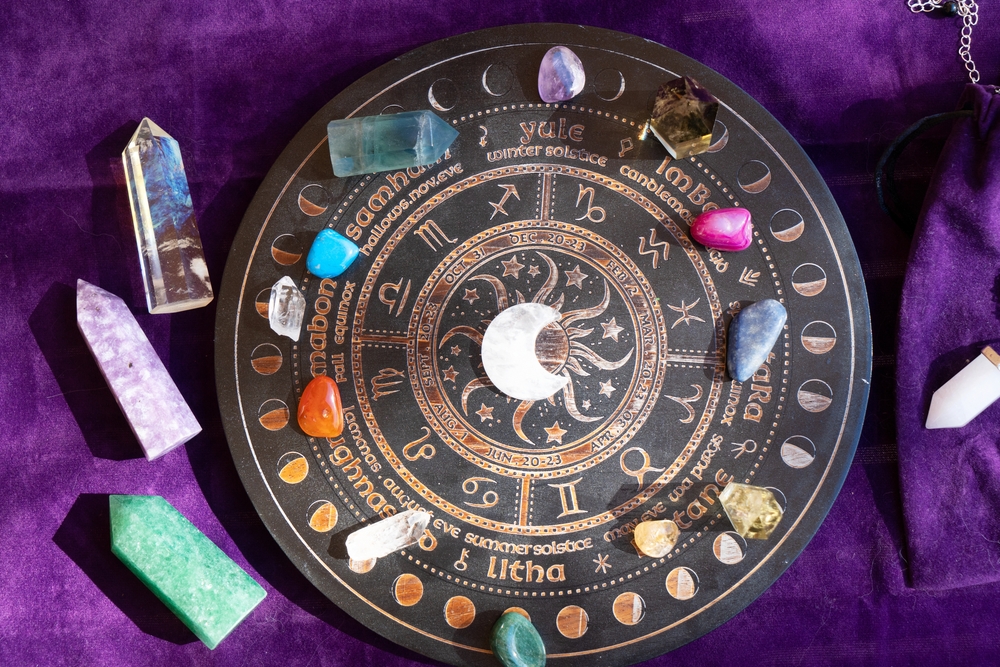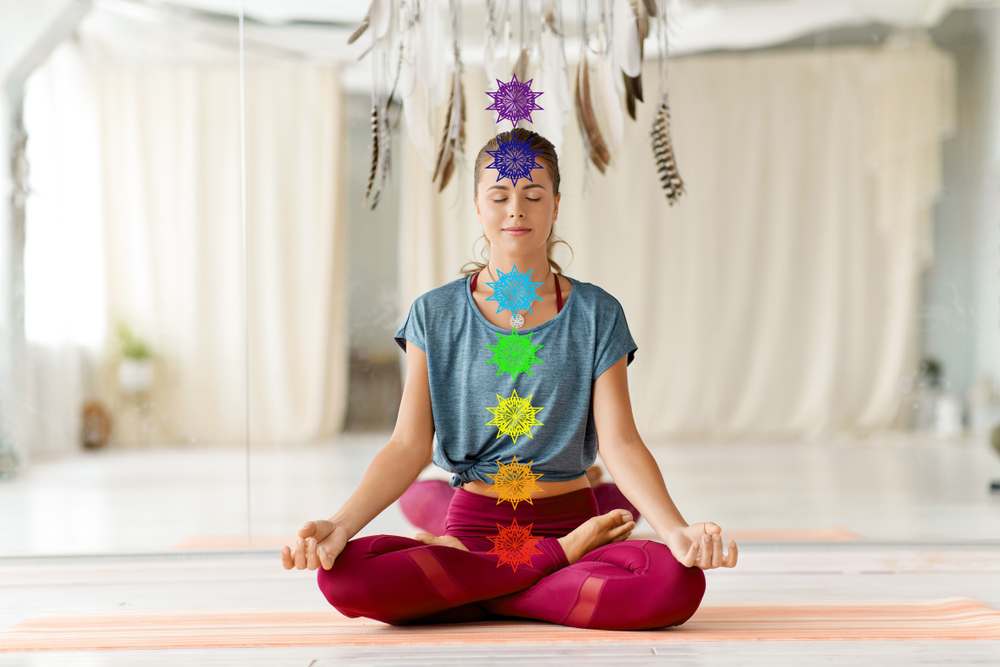Ah, the internet—the place where you can order a pizza, learn quantum physics, and accidentally buy a bottle of “energy-charged water” for $49.99. While science keeps advancing, the web remains a treasure chest of outdated, disproven, and downright bizarre “therapies” that refuse to die. These treatments may have been thoroughly debunked years ago, but somehow, they still find loyal fans and slick marketing teams to keep them alive.
From magnetic miracles to mystical detoxes, it’s a reminder that when it comes to health fads, belief can be stronger than evidence. So, buckle up—because we’re about to take a wild tour through nine therapies that should’ve stayed in the pseudoscience museum.
1. Crystal Healing
Nothing says “good vibes only” quite like a handful of shiny rocks. Crystal healing promises to align your chakras, cleanse your aura, and raise your energy frequency—though science has repeatedly shown there’s zero measurable energy in quartz beyond what you’d find in your phone battery. Despite countless studies debunking any physical healing properties, the market for crystal sets continues to grow online. Influencers show off amethyst “stress stones,” and wellness shops promote rose quartz as a love magnet. The truth? Crystals are beautiful, but their real power lies in decoration, not detoxification.
2. Magnetic Therapy
For decades, magnetic bracelets and mattresses have been marketed as miracle cures for pain, inflammation, and poor circulation. The premise sounds science-y enough—after all, magnets affect metal, so why not blood? Unfortunately, the human body isn’t a refrigerator door, and peer-reviewed studies have consistently shown that magnetic therapy works no better than a placebo. That hasn’t stopped companies from selling them with slick ads featuring glowing testimonials and “medical-grade magnets.” Spoiler: the only thing magnetic therapy attracts is your wallet.
3. Ear Candling
If you’ve ever seen a video of someone sticking a lit candle in their ear and claiming to “draw out toxins,” you’ve witnessed one of the internet’s strangest wellness fads. The idea is that heat from the candle creates suction, pulling out wax and impurities. In reality, the only thing it sucks in is gullibility. Studies and doctors agree—ear candling doesn’t remove wax, it can actually drip hot wax into your ear and cause burns or blockages. Yet somehow, ear candles are still marketed as ancient wisdom, proving that old myths burn bright online.
4. Coffee Enemas
Yes, this one is exactly what it sounds like—coffee, but not through your mouth. Popularized by detox enthusiasts and certain “natural healing” influencers, coffee enemas supposedly flush toxins from your liver and improve overall health. The problem? There’s no scientific evidence they do anything other than make your intestines very unhappy. In fact, doctors have repeatedly warned of infections, dehydration, and even colon damage. Still, wellness websites continue to sell “organic enema kits” with a straight face—and people keep buying them.
5. Oxygen Therapy for Healthy People
We all need oxygen to live, but somewhere along the line, someone decided that extra oxygen equals extra health. Enter “oxygen bars” and at-home oxygen therapy devices that promise mental clarity, detoxification, and improved mood. The reality? Unless you have a diagnosed medical condition that limits your oxygen levels, your body can’t store or use more than it needs. In fact, excessive oxygen can even be harmful in high doses. Still, sleek online marketing has turned breathing air—a free, daily necessity—into a luxury lifestyle product.
6. Homeopathy
Homeopathy might win the prize for the most persistent pseudoscience ever invented. Created in the 18th century, it’s based on the idea that diluting a substance until almost none of it remains somehow makes it stronger. Countless scientific studies have shown it doesn’t work—beyond the placebo effect—but that hasn’t stopped the internet from turning it into a billion-dollar global business. Homeopathic “remedies” for anxiety, allergies, and colds line online stores with fancy packaging and bold promises. The only thing truly potent about them is their marketing.
7. Detox Foot Pads
According to online sellers, you can “draw out toxins” while you sleep by sticking special pads to the bottoms of your feet. You wake up, peel them off, and—voilà!—they’re dark and sticky, proof that toxins have fled your body. Except, no. Independent testing shows that the pads darken simply from moisture and oxidation, not toxins. Despite this, “detox foot pads” remain hot sellers, because nothing says modern wellness like a fake science sleepover for your soles.
8. Colloidal Silver
Colloidal silver has been touted online as a cure-all for everything from acne to infections to cancer. The pitch is simple: tiny particles of silver suspended in liquid can supposedly destroy bacteria and viruses. Unfortunately, there’s zero credible evidence that it helps—and plenty showing it can harm. Overuse can cause a condition called argyria, which literally turns your skin blue. And yet, thanks to flashy alternative medicine websites, colloidal silver continues to shine as one of the internet’s most persistent health myths.
9. Chakra Balancing Sessions
Balancing your chakras might sound peaceful and mystical, but despite its popularity in spiritual and yoga communities, there’s no scientific proof that chakras exist as physical energy centers. Online “healers” sell remote chakra-balancing sessions where they claim to harmonize your energy through the screen. These sessions can cost hundreds of dollars for what essentially amounts to guided meditation mixed with wishful thinking. While many people say they feel better afterward, that’s more likely due to relaxation than metaphysical alignment. Still, in the world of wellness marketing, feelings often win over facts.
The Power of Belief Over Evidence
The enduring popularity of these debunked therapies proves one thing—people crave hope, control, and connection more than cold, hard data. Science can test a method, disprove it, and publish results, but belief has a heartbeat of its own. In an age where online marketing can make anything look legitimate, it’s easy to mistake aesthetic for authenticity. That doesn’t mean all alternative health practices are bogus—it just means we owe it to ourselves to question before clicking “buy.”
Have you ever tried one of these therapies—or seen one that made you laugh out loud? Share your stories, thoughts, or experiences in the comments below.
You May Also Like…
10 Parenting Choices That Push Children Straight Into Therapy
Is IV Therapy Within Your Budget? Here’s What to Consider
7 Disturbing Truths About the History of Electroshock Therapy
Could Online Marketplaces Be Quietly Stealing From Sellers?
6 Outdated Financial Tips That Are Still Circulating Online


